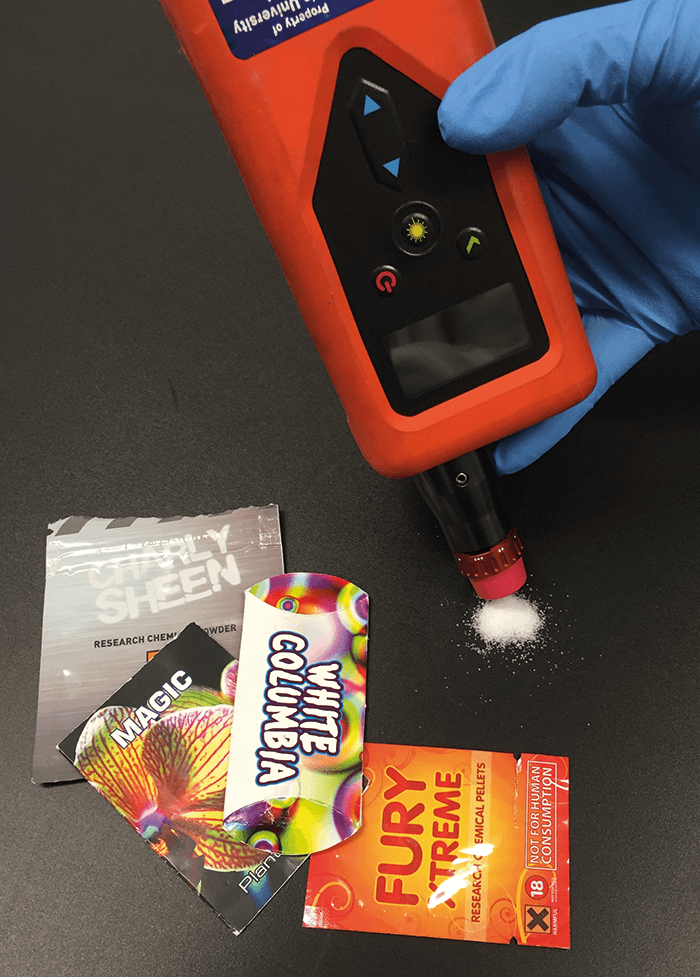
The ‘legal high’ market moves at a furious pace, with novel psychoactive substances (NPS) appearing more quickly than forensic science can cope with (1, 2). A team at Queen’s University Belfast (QUB), in collaboration with Forensic Science Northern Ireland (FSNI), have assessed a spectroscopic approach that can be used to streamline the identification process (3). Steven Bell, Director of Research and Chair of Physical Chemistry at the School of Chemistry and Chemical Engineering at QUB, explains the significance of the research.
Why is a new approach needed? The problem with NPS is the number of new variants appearing all the time. Manufacturers will always be one step ahead, because the number of potential new compounds they can make is so vast that we can’t anticipate which direction they’ll head next. However, we hope our new method will allow us to at least keep up with them. We wanted to use vibrational spectroscopy – basically attenuated total reflection (ATR) infrared and Raman – as a rapid screening method. There are two advantages to our approach. First, more rapid identification speeds up the criminal justice system, and second, there’s an important public health aspect; if we’re continuously monitoring what’s available at street level, new adverse health effects in the user community can be understood more quickly. In essence, we get early alerts as to what’s going on in the drugs market, as well as faster criminal justice – a win-win! However, the difficulty with a rapid screening approach is that it relies on having a comprehensive library available. In the world of NPS, libraries, almost by definition, go out of date as soon as they are prepared. If you’re testing the current generation of seized substances with the last generation library, success is not guaranteed.
How did you assess your approach? We screened a fixed set of about 200 samples using infrared and Raman. On our first pass, we got a lot of non-matching samples (only around 40 percent of samples were fully identified). We then conducted first-principles chemical identification on the non-matching compounds using accurate mass MS, 1H NMR and 13C NMR and added more than 30 new vibrational spectra into the library. After the update, we found that a pretty high proportion (approximately 75 percent) of all the samples could be identified using IR and Raman spectroscopy, indicating the potential benefits of a continuous feedback cycle. Raman spectroscopy is an excellent technique for all kinds of forensic problems because it’s non-destructive, non-contact, and molecularly specific – all good things. We now need to roll this out with live casework samples.
How do you feel about the term ‘legal highs’? It’s such a horrible misnomer for these compounds. For one thing, as the laws change they are unlikely to be legal. And the fact they’re labeled as “legal” suggests there has been some sort of safety testing carried out by an official agency, which of course is not the case. But it’s not just to do with the purity; some of these NPS can be pure compounds but still highly toxic with the potential to cause fatalities.
What impact will your findings have? It’s a little early to see an impact in the academic analytical community, but we’ve had interest from all kinds of different organizations; not just the police, but also local councils, national government agencies and so on. Queen’s is now emerging as a hub for research into NPS. We’ve been working with FSNI for many years on several aspects of analysis, including paint analysis, gunshot residue, inks and explosives. In addition, the Drug and Alcohol Research Network (DARN) at Queen’s has conducted several studies that bring perspectives from other disciplines, which can complement the analytical chemistry. The project was fully funded by the Department of Justice (N.I.) Assets Recovery Community Scheme, which takes assets seized from criminals and directs them back to the communities they were taken from.
References
- https://theanalyticalscientist.com/issues/0216/legal-highs-lows/ https://theanalyticalscientist.com/issues/0216/the-analytical-war-on-novel-psychoactive-substances/ LE Jones et al, “Infrared and Raman screening of seized novel psychoactive substances: A large scale study of >200 samples”, Analyst, 141, 902-909 (2016), DOI: 10.1039/c5an02326b
